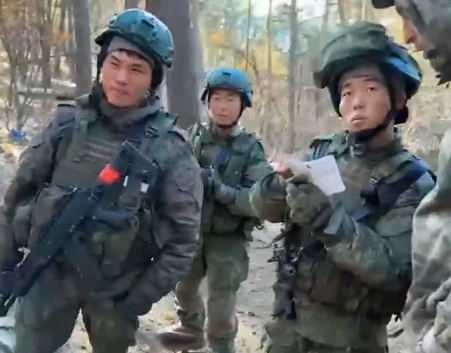In the early hours of Jan. 15, Russia launched a complex airstrike against Ukraine using more than 70 Shahed attack drones and more than 40 missiles of at least 10 different types.
Included in the barrage was an unconfirmed number of nuclear-capable Kh-55SM cruise missiles launched from Tu-95MS strategic bombers.
JOIN US ON TELEGRAM
Follow our coverage of the war on the @Kyivpost_official.

The attack targeted gas infrastructure in Ukraine’s Kharkiv, Lviv, and Ivano-Frankivsk regions, the Kremlin later acknowledged.
The Kh-55SMs are an extended-range variation of the Kh-55, also known as the RKV-500 (NATO: AS-15 Kent) subsonic air-launched cruise missile. The missiles, fitted with inert dummy warheads presumably to act as decoys to confuse and disrupt Ukraine’s air defenses, were launched from Tu-95MS strategic bombers.
The Russian 6-meter (20-feet) long Kh-55SM was developed in the 1980s as a strategic strike cruise missile primarily launched from strategic bombers, including the Tu-95MS.
The Kh-55SM is equipped with an R95-300 turbofan engine and an increased fuel capacity compared to the Kh-55, on which it is based, giving it an operational range of more than 3,000 kilometers (1,864 miles).

Which Foreign Leaders Are Invited to Trump’s Inauguration?
It is designed to carry a 200-kiloton thermonuclear warhead, although some commentators believe that Russia is likely to have designed a conventional explosive payload.
The use of the missiles as an air defense decoy, combined with the different types of missiles used, has raised several questions with military commentators, but with no consensus of the significance, if any, of that particular mix of weaponry.
Why so many different missiles?
Some analysts suggested that using 10 different types of missiles was an intentional strategy on Russia’s part.

Wednesday’s attack comprised an Iskander or KN-23 ballistic missile, seven Kh-22 or Kh-32 missiles launched from Tu-22M3 bombers, four sea-launched Kalibr cruise missiles, 27 Kh-101/Kh-55SM and four Kh-59/Kh-69 air-launched cruise missiles, along with 74 Shahed drones and decoy drones.
They argued that by mixing the types of both live and decoy missile types, launched from different platforms and locations, Russia intended to make Ukraine’s anti-missile defense operations more complicated - intercepting high-speed Kh-22/Kh-32 and ballistic missiles requires the use of Ukraine’s limited stocks of Patriot or SAMP-T air defense systems.
If so, it didn’t really work as 30 of the missiles, or 85 percent, were brought down by Ukraine’s air defenses, and all the drones were either shot down or neutralized by electronic warfare measures.
Other commentators suggested a more prosaic reason - a missile shortage that Russia is facing after almost three years of full-on war in Ukraine. They argued that Moscow has sufficient stocks of the Kh-55SM to expend them for that purpose.
However, it seems that Russia’s alleged use of missiles with dummy warheads instead of live conventional payloads – if they exist – continues to baffle analysts.
They wonder if it is because the warheads aren’t available. Or does outfitting them take too long? Or is it too complex to carry out in the combat area? .
The Ukrainian Air Force reported that Russia used more Kh-55SMs – 55 Kh-101/Kh-55SMs out of 94 in total – in a large-scale missile attack on Dec. 13, plus another 50 Kh-101/Kh-55SMs on Dec. 25. However, it is not clear if the Kh-55SMs were also used as decoys on either or both occasions.
You can also highlight the text and press Ctrl + Enter










